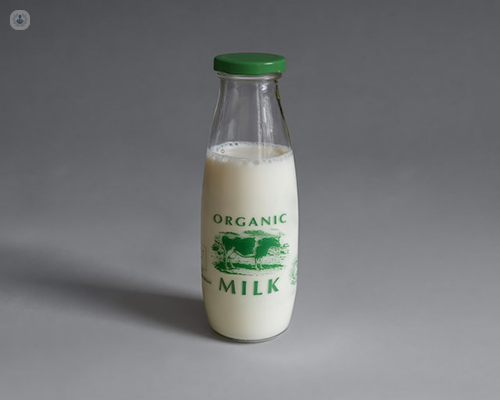How are food allergies diagnosed?
Written by:In this detailed article, highly respected consultant paediatric allergist Professor George Du Toit shares his expert insight on how food allergies are categorised, including how IgE mediated and non-IgE mediated allergies differ. The revered specialist also details the symptoms patients typically experience and the various forms of testing involved in the diagnosis of food allergies.

What are common symptoms of an IgE-mediated food allergy?
Common symptoms of an IgE-mediated food allergy include hives, itching, and swelling, usually associated with mouth symptoms (if the reaction is caused by a food). Gastrointestinal symptoms such as nausea, vomiting, and diarrhoea may also occur, along with intense abdominal pain. Respiratory symptoms may include cough and wheezing with difficulty in breathing. In severe cases, an allergic reaction can cause anaphylaxis, a potentially life-threatening condition that arises due to a rapid drop in blood pressure and difficulty breathing.
These symptoms usually occur within minutes to a few hours after consuming the allergenic food. Symptoms may vary between patients and even within the same patient with each allergic reaction. Central features are not uncommon, these may appear with an appearance of being lethargic, floppy, and sleepy although the patient can be roused.
What are the common symptoms of a non-IgE mediated food allergy?
The symptoms of non-IgE mediated food allergies are generally less severe than those of IgE-mediated food allergies, and they tend to come on more slowly, often several hours or even days after consuming the allergenic food. Common symptoms that are ascribed to non-IgE mediated food allergies include:
- gastrointestinal symptoms: such as vomiting, abdominal pain, bloating, gas, constipation, and diarrhoea
- eczema or other skin rashes
- respiratory symptoms: such as runny nose, sneezing, and congestion
- asthma symptoms: such as wheezing and shortness of breath
- fatigue or lethargy
- headaches or migraines
- behavioural issues: such as irritability, hyperactivity, or difficulty concentrating
It's worth noting that non-IgE mediated food allergies can be harder to diagnose and may require elimination diets or food challenges for confirmation. There is no blood test to predict the triggers for these symptoms.
There are many distinct non-IgE mediated ‘food allergies’ syndromes. Examples include food protein induced enterocolitis syndrome (FPIES), cow’s milk protein induced enterocolitis syndrome (CMPIES) and even coeliac disease could be considered a variant of allergy, where a food induces specific symptoms.
How is an IgE mediated food allergy diagnosed?
An IgE-mediated food allergy is typically diagnosed through a combination of a physical examination, a patient's medical history, and one or more diagnostic tests. The first and most important step in the diagnostic process is usually a thorough evaluation of the patient's symptoms and medical history, including a detailed history of the patient's diet and any suggestive reactions to specific foods. The following are some common diagnostic tests used to diagnose IgE-mediated food allergies:
- Skin prick test (SPT): A small amount of the suspected allergen is placed on the skin and then the skin is lightly pricked with a lancet. If the patient is allergic to the substance, a raised bump will appear at the test site.
- Blood test (IgE testing): A blood test can measure the level of specific IgE antibodies in the blood, which can help indicate the presence of allergy. The most common is ImmunoCAP test, and increasingly tests done on microchips. There are also component tests that identify immune reactivity to specific proteins in the allergen, this is especially helpful in the diagnosis of allergies such as peanut, hazel and soya
- Food Challenge: A food challenge is an oral test in which the patient is given small amounts of the suspected allergen and observed for a reaction. This test is usually only done in a medical setting and under the supervision of an allergist.
It's worth noting that a positive allergy test (SPT and or IgE) result does not always mean that the patient has a food allergy, and a negative test result does not always mean that the patient does not have a food allergy. In equivocal diagnostic scenarios an oral food challenge (OFC) may be required to resolve this uncertainty. An OFC entails the administration of small oral increments of the food, aiming for an age-appropriate portion sizes is eaten, this is undertaken in a safe setting and by experienced staff. The results of diagnostic tests should be interpreted in the context of the patient's symptoms and medical history, and any other relevant clinical information.
How is a non-IgE mediated food allergy diagnosed?
In the absence of a validated blood or skin test, non-IgE mediated food allergies are diagnosed through elimination and reintroduction of the incriminated allergen.
For certain conditions, the history may reveal typical symptoms after repeated exposure, such as in patients with FPIES, there will be a history of profuse vomiting that comes on some hours after ingestion of the food, and an absence of any other allergic features. In CMPIES, there will be a history of fresh blood specks in the infant's stool on exposure to cow's milk protein in breast milk or when taken as formula. These symptoms should resolve with the elimination of cow's milk.
You can read more about the most common food allergies that affect children and adults and how intolerances differ from allergies in another of Professor Du Toit’s detailed articles on the topic.
If you wish to schedule a consultation with Professor Du Toit, you can do so by visiting his Top Doctors profile.


